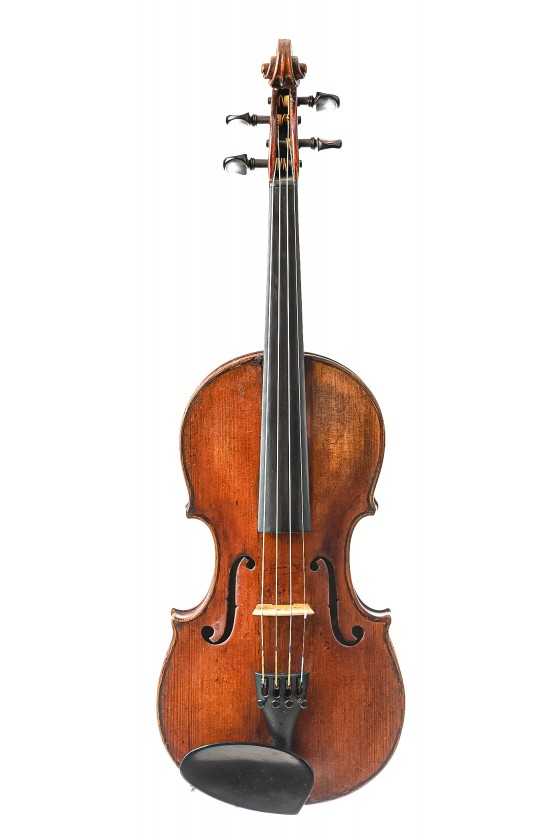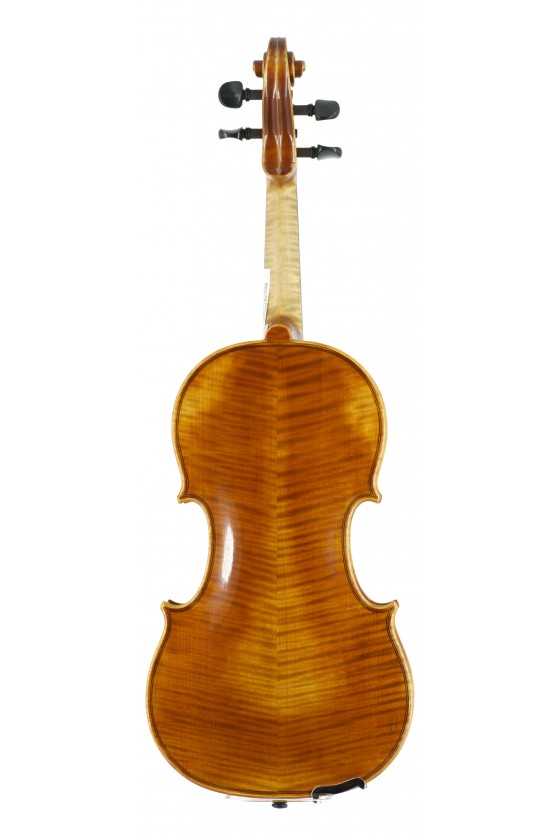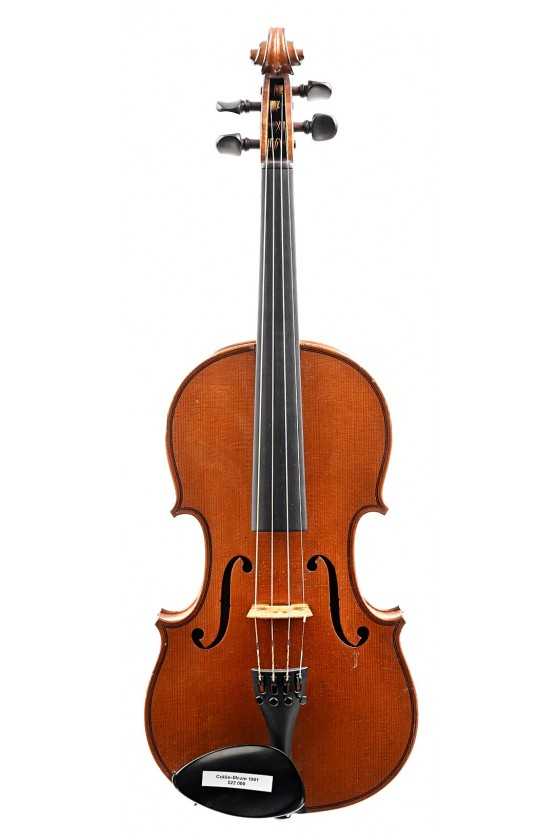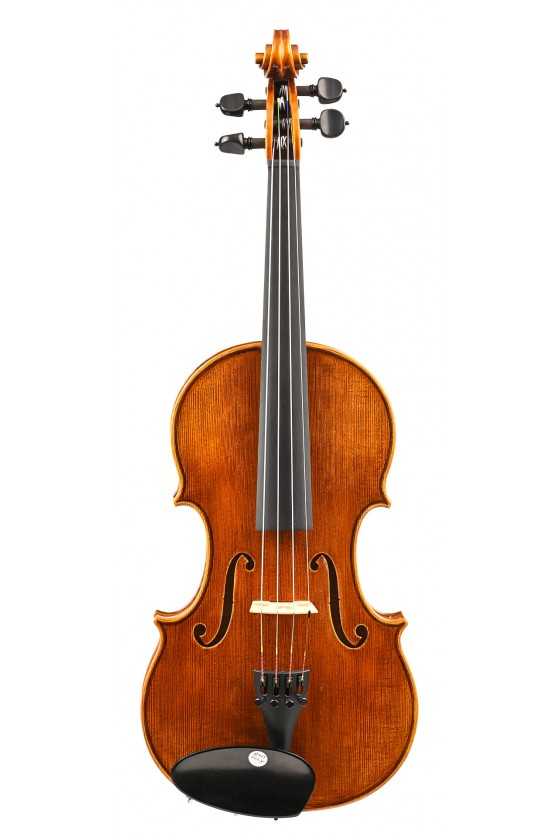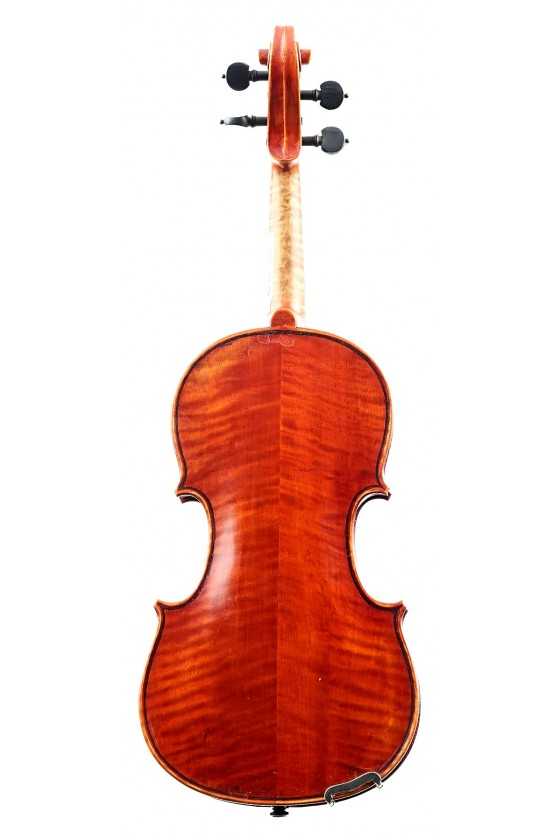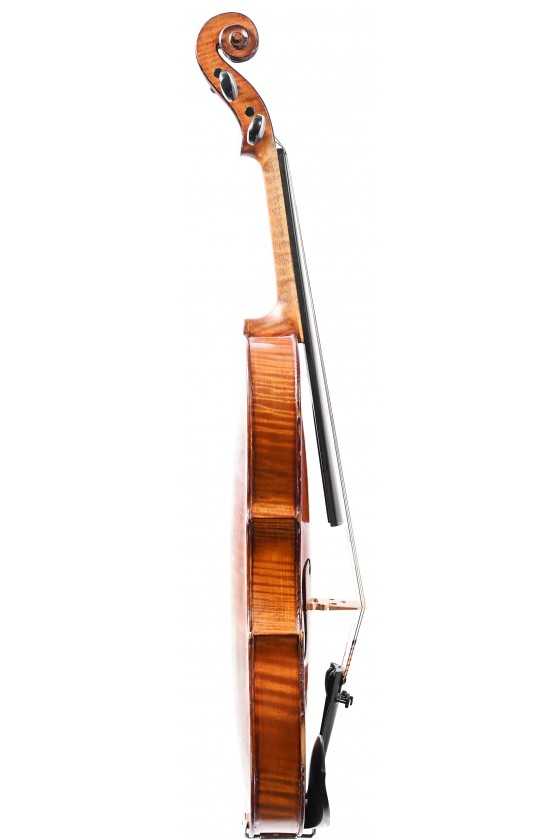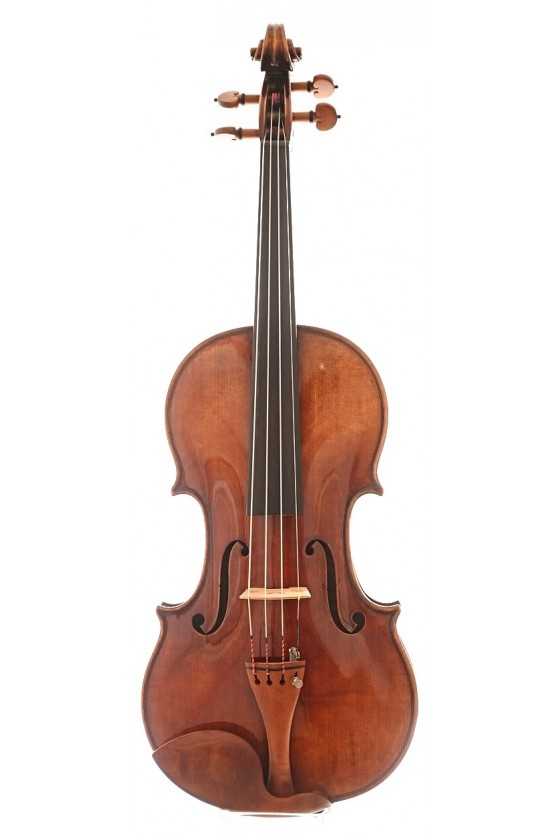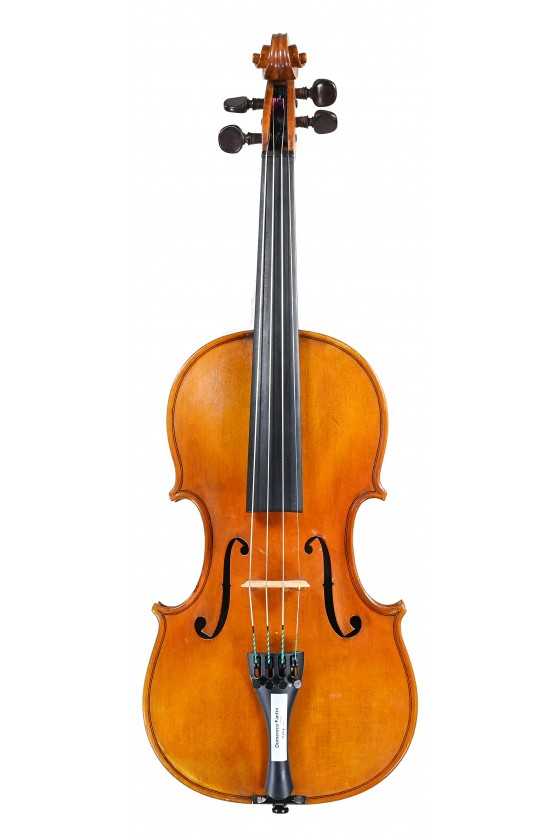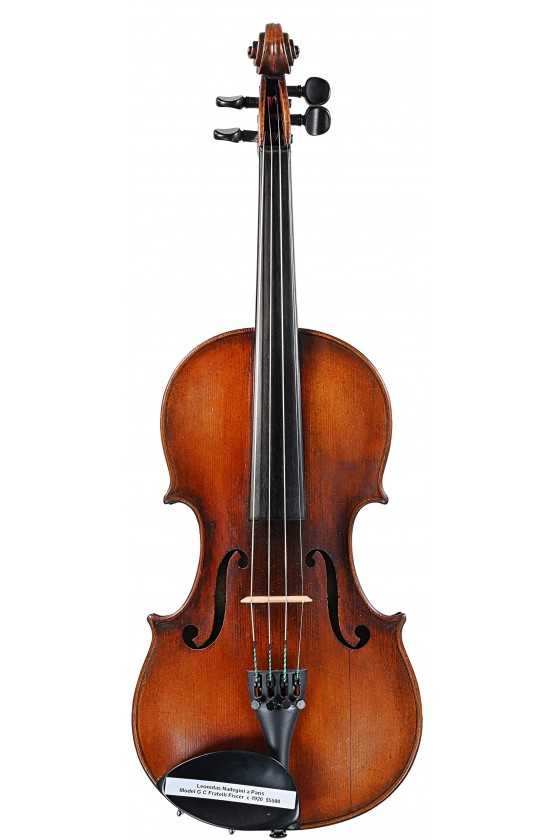Antonius Vinaccia 1792 Violin Repaired in 1902
This violin bears the label " Antonius Vinaccia, Napoli in Via Constantinii, a. 1792", bearing the evidence of having been repaired in 1902, as indicated by the handwriting inside the instrument.
Antonio Vinaccia (1754–1781) was a pivotal figure in the history of instrument making. He was the head of a family of instrument makers in Naples during the mid-18th to late 19th centuries. His craftsmanship, which he honed in Naples from about 1766 to 1774, was highly regarded. Vinaccia was particularly known for making violins in the style of Gagliano and his exceptional mandolins. Some of his most significant works, such as his mandolins with beautifully inlaid backs of ivory, mother-of-pearl, and tortoiseshell, are now preserved in Naples's Museo Spagnuolo (Palazzo degli Studi). These instruments bear a label that reads "Antonius Vinaccia, Napoli in Via Constantinii, a. 1766," and similar labels are dated 1774. Antonio's two sons, Gennaro and Gaetano, also followed in his footsteps and became instrument makers.


